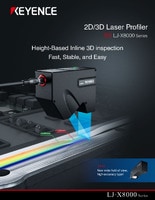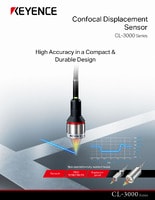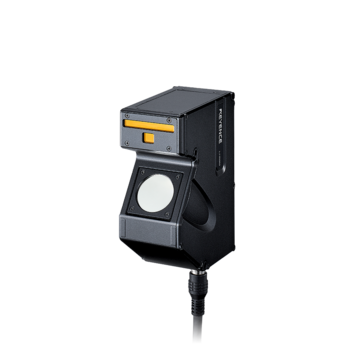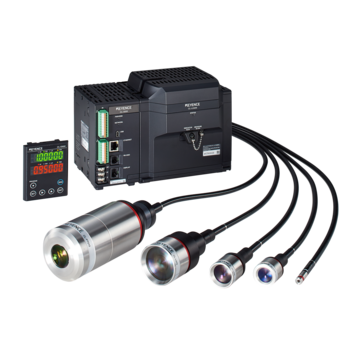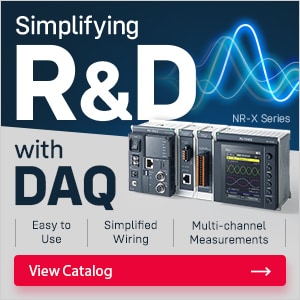Measurement Sensors
Dimension Measurement
Displacement Measurement
Battery Inspection Sensors
Whether it’s for a gas-powered car or an EV, car batteries are crucial for smooth vehicle operation. Beyond starting an internal combustion engine or running an EV’s motor, they power all vehicle electrical systems, ranging from wipers and mirrors to headlights and the entire HVAC system. So, it’s no wonder battery quality during the manufacturing process is essential for battery reliability.
KEYENCE recognizes the importance of a well-functioning battery and provides comprehensive inspection solutions. Our advanced battery inspection sensors accurately assess a car battery's condition and assembly during the manufacturing process, ensuring reliable and optimal functionality.
Discover how automated battery inspections can supercharge your process and why KEYENCE is the spark you need for reliable vehicle battery inspection!
Get detailed information on our products by downloading our catalog.
View Catalog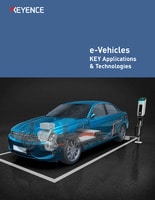

What Parts of Batteries Need Inspecting?
Batteries have a few main areas where they can commonly see degradation or damage:
Casing
Signs of cracking, leakage, and swelling suggest the container may need replacement. This could potentially lead to electrolyte spills and corrosion, which could pose risks to the battery and its environment. Additionally, checking for discoloration in the translucent container might reveal lead hydrate, indicating insufficient recharging after discharge.
Terminals
A common issue with batteries is terminal corrosion, hindering connectivity and disrupting electricity flow, leading to reduced performance or failure. Terminals should be regularly cleaned and inspected for corrosion.
Separators
Tears in separators can cause short circuits and damage battery cells. Inspections check for discoloration or tears in the separators.
Electrolyte Levels
Maintaining optimal electrolyte levels is crucial for efficient battery operation. Insufficient levels may cause sulfation and reduced performance, while excessive levels can lead to overflow and corrosion.
Cell Connections
Loose or damaged cell connections can lead to poor electrical conductivity and reduced battery performance. Inspections ensure all connections are secure and free from damage or corrosion.
Challenges of Manual Inspection in Battery Manufacturing
Inspection is crucial in battery manufacturing to ensure quality and safety. However, manual battery manufacturing inspection presents challenges that can impact production efficiency:
Number of Batteries in Production
The primary challenge is the substantial volume of batteries requiring inspection. With the electric vehicle boom in full swing, battery production is skyrocketing, and mountains of batteries need inspection. Manufacturers are juggling the impossible, hitting production targets while keeping quality flawless. Meanwhile, manual inspectors are trying to spot defects on endless conveyor belts of batteries.
Human Error
Another challenge in battery manufacturing is human error. Manual battery manufacturing inspection, repetitive and monotonous, is prone to mistakes. Even skilled inspectors may miss minor defects due to fatigue or distraction, which can significantly affect the performance and safety of the final product.
Expensive and Time-Consuming
Moreover, manual inspection is time-consuming and labor-intensive. Checking each battery eats up hours and manpower, driving up production costs. Balancing quality standards with production targets is no walk in the park.
We’re here to provide you with more details.
Reach out today!

Benefits of Automatic Battery Inspection
Automatic battery manufacturing inspection employs non-contact, high-precision laser displacement sensors, position sensors, and measurement sensors to acquire data on battery condition and performance. Analyzing this data helps assess battery health and integrity, as well as the identification of potential issues.
Automatic battery inspection isn’t just smart—it’s a power move with supercharging efficiency, safety, and quality.
Improved Quality Control
Automatic battery inspection enhances quality control for manufacturers. Using non-contact battery inspection sensors prevents damage from manual testing and preserves battery integrity for superior products. Additionally, advanced data analysis software detects slight defects or performance deviations, enabling early issue prevention.
Enhanced Safety
The integration of automatic battery inspection enhances manufacturing safety. Traditional methods required technicians to handle hazardous materials and conduct manual tests, increasing accident risks. Automatic systems reduce this by removing human involvement.
Cost Savings
Automatic battery inspection systems offer manufacturers significant time savings, improved quality control, enhanced safety, and cost reductions. Catching defects early means no recalls, no replacements, and no pouring money into training technicians or paying salaries for manual fixes. Smoother operations and better products? That’s a magnet for customers and revenue. It’s the ultimate production hack: save money, make money, and skip the headaches.
KEYENCE Measurement Sensors for Battery Inspection
KEYENCE provides a range of measurement sensors for battery inspection. These high-precision, non-contact battery inspection sensors measure battery terminal heights, tab locations, electrode thickness, and width accurately without physical contact.
A major challenge in battery inspection is ensuring consistent quality control. KEYENCE's laser profilers aid this by providing precise 2D/3D measurements to detect variations in height, width, and angles within each battery cell. This detailed information is crucial for identifying defects or inconsistencies in production and ensuring high-quality outcomes.
KEYENCE profile EV battery inspection sensors gather height and intensity data, enabling the detection of subtle height variations and surface imperfections like scratches and dents. This is crucial for lithium-ion batteries, where minor damage can affect safety and performance.
KEYENCE's battery inspection sensors provide fast and accurate inspection of stationary targets in fractions of a second, ensuring high-speed production lines maintain quality control. They perform well under various lighting conditions, enhancing their versatility.
Trust in KEYENCE for reliable and precise automotive battery inspection sensors. Contact us today to learn more!
Contact us to learn more about how our advanced technology can help take your business to the next level.
Contact Us
Related Products
Applications
Dimension Measurement
- Thickness and Width Measurement
- Step Height Measurement
- Inner and Outer Diameter Measurement
- Measuring Angles
- Meandering/Edge Measurement
Displacement Measurement
- Positioning and Stroke Length Measurement
- Vibration and Runout Measurement
- Deflection Measurement
- Measuring Eccentricity

